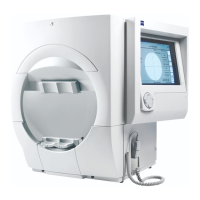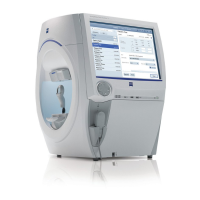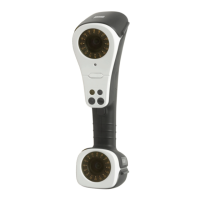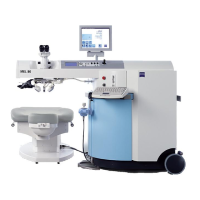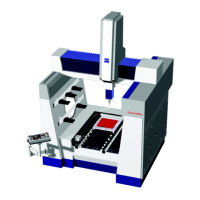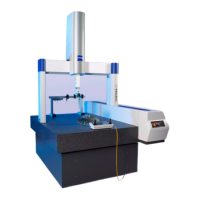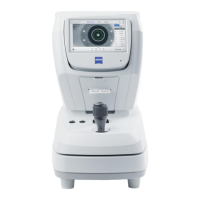Test Parameters and Strategies
Humphrey Field Analyzer II-
i
series User Manual 2660021145640 A
4-4
Test Strategies
One of the most important test parameter settings is test strategy. For both screening and threshold
testing, the strategy you use can affect the total test time and the precision to which the
measurements are made. The strategy also dictates whether screening test results are displayed as
qualitative (symbols) or quantitative (decibels) information. All threshold strategies yield quantitative
results. Each measures the threshold at every test point. The test strategies differ as shown in the
tables below. Refer to both Table 4.1 and Table 4.2 for a more detailed explanation of the test
strategies, as well as for information about the other
screening and threshold parameters.
Table 4.1 Screening Test Parameters
(Factory default parameter settings appear in bold print.)
Screening
Parameters
Parameter
Settings
Description
Test Strategy Two Zone For each point in the test pattern, a stimulus is presented 6 dB brighter
than the expected hill
of vision. Printouts display circles (O) for seen stimuli
and boxes (■) for missed stimuli. Since screening is done with an intensity
6 dB
brighter than the expected threshold, missed points are known to be
at least 6 dB deep.
Three Zone Same as Two Zone, except each missed point is measured again at a
maximum in
tensity of 10,000 apostilbs (0 decibels) to determine if the
defect is absolute. Printouts display circles (O) for seen stimuli, “X’s” for
relative defects, and boxes (■) for absolute defects.
Quantify Defects Same as Two Zone, except the sensitivity at each missed poin
t is measured
relative to the expected threshold. Printouts display circles (O) for seen
stimuli, and numbers (in decibels) to indicate the depth of any defects. The
greater the number, the lower the retinal sensitivity (deeper the defect).
Test Speed Normal Two stimulus presentation speeds are available.
Slow You may change the test speed while a test is in progress to allow the
patient some additional time to respond.
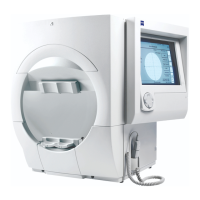
